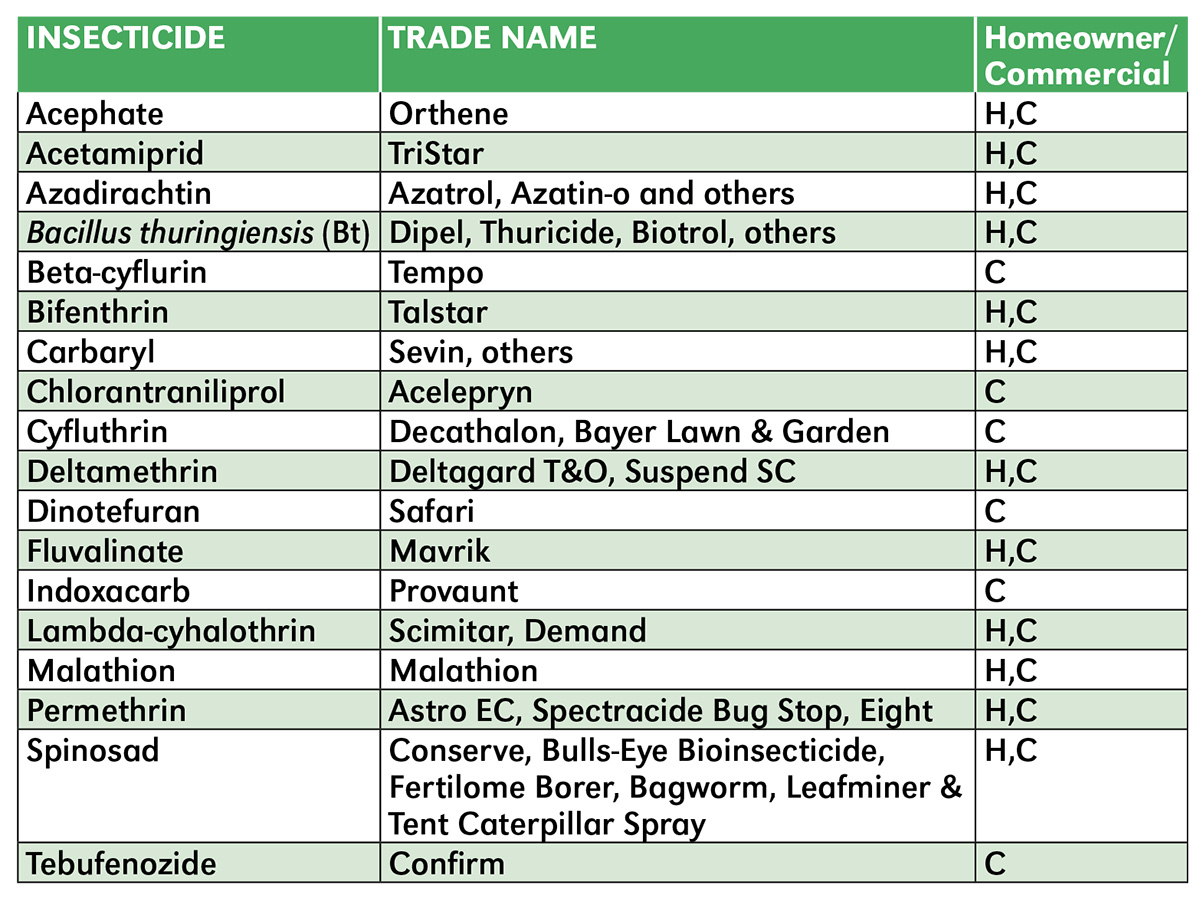
By Sarah Browning, Extension Educator, Lancaster Co.
Later this month, a new generation of bagworms will begin to hatch from the small, tan, oval-shaped, cocoon-like structures created by last year’s insects. Large numbers of bagworms can cause severe damage to windbreaks, particularly eastern red cedar and spruce. Entire plants can be killed if an infestation goes uncontrolled.
Bagworms also feed on shade, orchard and forest trees of nearly every kind, as well as many ornamental shrubs and perennials. The insects and their cocoons can be hard to spot when low numbers are present since they look so much like a natural part of the plant.
Usually bagworm infestations build up slowly over two or three years. There have been increasing bagworm populations in Lancaster County for the last few years.
BAGWORM IDENTIFICATION AND LIFE CYCLE
The adult male bagworm is a small, furry gray moth with clear wings; the adult female does not have wings and never leaves the bag she constructs during feeding. The larva is a brown or tan caterpillar with black markings. Bagworms overwinter in the egg stage inside the female bags, which are fastened to twigs. There may be as many as 300–1,000 eggs in a single bag.
Since the female bagworm cannot fly, local populations can build up to damaging levels as succeeding generations of insects emerge. Depending on spring and early summer temperatures, eggs hatch from mid- to late- May through early June, and larvae feed until late August or early September. There is one generation per year.
After hatching, the larvae emerge from a hole at the base of the mother’s bag and spin down a strand of silk. The tiny insect is often ballooned by the wind to nearby branches or plants. Once a suitable host is found, the new insect immediately begins to form a new bag over its body. Initially the young insect’s bag is about 1/8-inch long, but at maturity, will grow up to 2-inches long. By mid-August, the mature larvae attach their bag to a branch with a strong band of silk and begin to pupate. Adult males emerge in September.
CONTROL
Chemical Control — Timing is very important for successful bagworm control. Applications made from late May through mid-June are most effective. It’s easier to kill young larva in the early stages of development. Scout trees and make an application before new generation bags reach 1/2-inch in length.
Bacillus thuringiensis (Bt) is very effective at controlling bagworms without damaging other beneficial insects. It also has very low toxicity to birds and mammals. Other low toxicity products that give good control include spinosad, azadiractin and insecticidal soaps. However, these products may require repeated applications to give good control. Additional insecticide options for bagworm control are listed in the table pictured.
Insecticidal spray applications require thorough coverage to penetrate the canopy and contact the feeding bagworms. Use ground equipment that delivers a high spray volume and pressure. Aerial applications may not provide thorough enough coverage, leading to less than satisfactory bagworm control.
Insecticides applied later in the summer when bagworms are larger likely won’t be as effective. By late-August, chemical control is no longer feasible, as most bagworms will have ceased feeding and pupated within their bags.
Biological Control — Bagworms have many natural insect enemies, which feed on them during their larval or pupal stages. A study at the University of Illinois at Urbana–Champaign showed planting asters and daisies near bagworm-infested trees provided shelter and nectar for beneficial insects and reduced bagworm numbers. If insecticidal control is used on these trees, select reduced-risk products that have minimal impact on these natural insect enemies, such as BT. Birds, especially sparrows and finches, are important predators of bagworms in late summer.
Mechanical Control — This fall, handpick cocoons from small windbreak trees and destroy them by immersing them in kerosene or crushing them. Be sure to remove the bags before eggs begin to hatch in May.